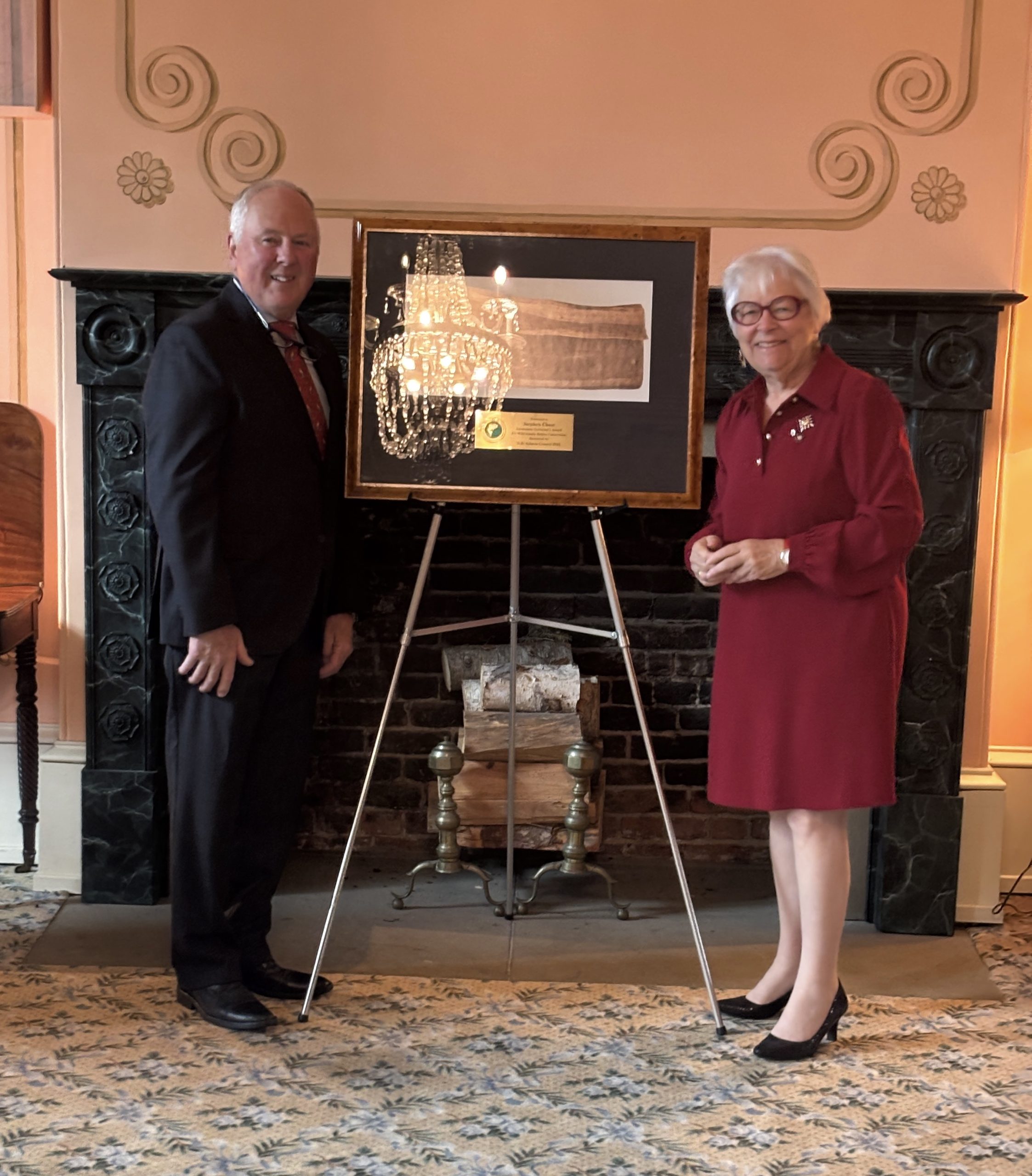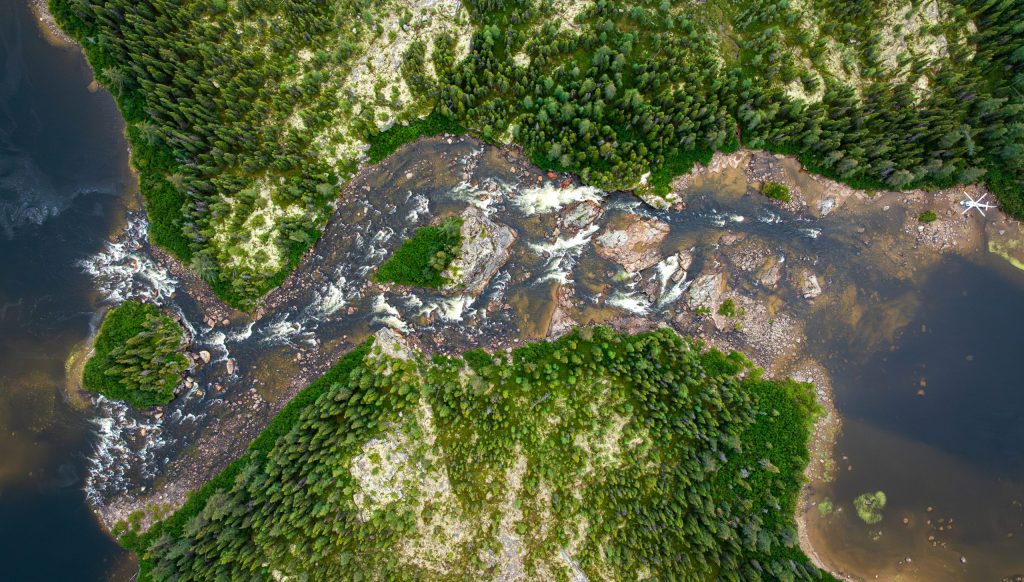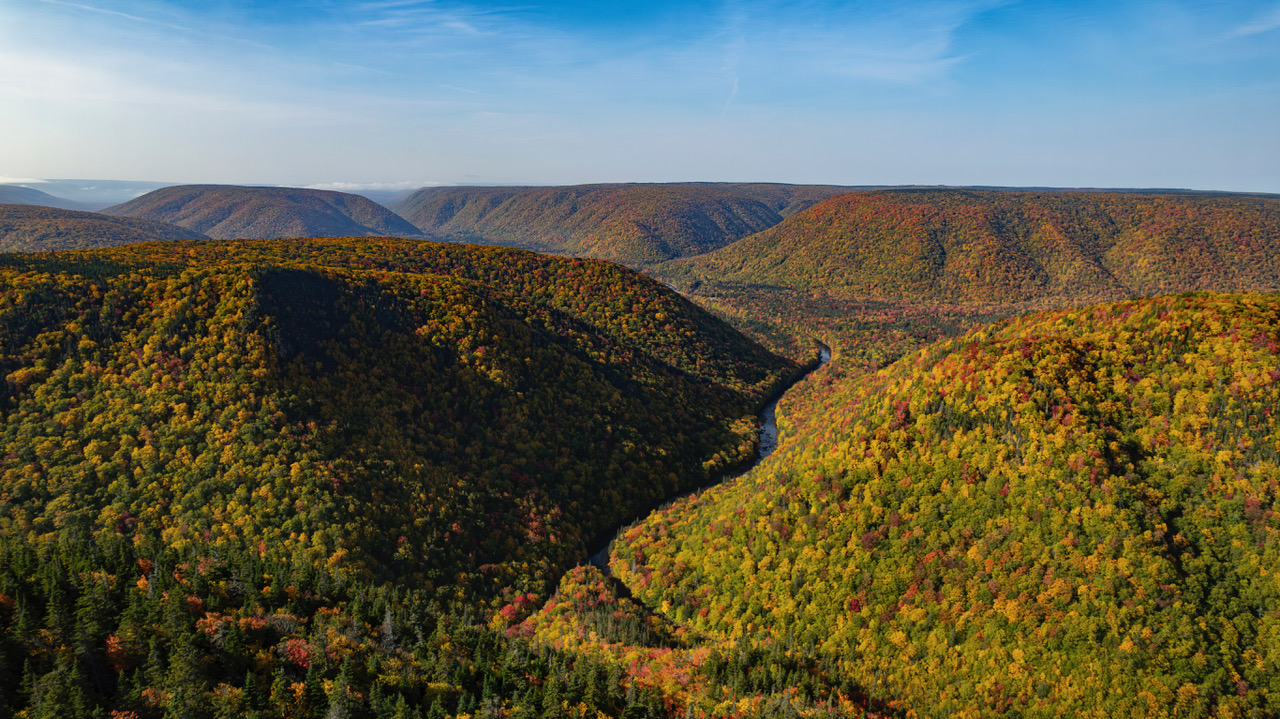
Subscribe & stay up-to-date with ASF

While recreational angling is now closed in much of Eastern Canada, rivers in Nova Scotia (and a few in New Brunswick) remain open. For some anglers, fall is the best time of year to be on the river. Deirdre Green, ASF’s Executive Director of Regional Programs, was on the Margaree recently.
“It was absolutely stunning,” Deirdre said. “The reds this year were quite vibrant, and the colors were early. It’s simply a spectacular backdrop.”
Especially after the summer we had, a little rain, cold water, and an open river are reasons to rejoice. Deirdre also attended the Margaree Salmon Association dinner and auction.
“The first handful of people I spoke to told me they released salmon yesterday morning,” she said. “People are hooking into fish and most are showing the rich, darker tones typical of fall—with shadowed backs and bronze flanks as they begin their pre-spawning transformation.”
Water levels are still low. So low that Deirdre has been getting reports of a lot of Atlantic salmon being seen in estuaries, waiting on rain to make their push upriver.
In fact, earlier in the season, when trout angling was notably good, some reported seeing more salmon than they ever have in some of the province’s historic salmon rivers. But that was followed by one of the driest summers in modern memory.
Sections of the Margaree were closed July 17th under the warm water protocol and the river didn’t fully reopen until September 25th.
“That is the longest closure we have seen since the Warm Water Protocol was first implemented in 2018 on the Margaree,” Deirdre said.
Along with low, warm water, one of the defining features of this summer in Nova Scotia was the province-wide forest-entry ban. It exposed a remarkable side of the salmon conservation community.
“For groups doing fieldwork and restoration, it changed how projects had to be planned and approved,” she said. “Despite those challenges, they adapted, secured the necessary permits, and still got the work done. That is a real testament to their commitment and determination.”
People like Nicholas MacInnis, Manager of Restoration Programs for the Nova Scotia Salmon Association (NSSA), did a lot of work to ensure both the Department of Natural Resources and those doing the restoration work understood what both sides needed, and how to work together.
“It was a season that required perseverance,” Deirdre said. “The groups showed it and now we’re hoping the salmon can do the same, finding their way to spawn with the late fall rains we hope will arrive.”
In this week’s Rivernotes, we have several great photo submissions from the Margaree River, and reports about the work done on the Margaree and the St. Mary’s.
There is also information about a recently completed Headwaters restoration project in Prince Edward Island, eDNA research in Quebec, and a great initiative in Newfoundland and Labrador deploying monofilament collection receptacles.
The 2025 Lieutenant Governor’s Award was awarded in New Brunswick, and the Salmonid Association of Eastern Newfoundland is seeking nominations for the Guenter Behr award. And we have some updates from rivers that are still open in Nova Scotia and New Brunswick, and reminders for anglers as all the fisheries near their end for the year.
We’re also pleased to share a great article by Dana Milbank in the Washington Post, “Why you should go fishing, even if you think you’d be terrible at it.” It does a great job at highlighting some of the ecological, political, and personal impacts of fly-fishing, even for beginners.
With the end of the angling seasons in the province, ASF’s Newfoundland and Labrador Program Director, Kim Thompson, reminds everyone to submit their angling logs. She writes:
“With the closure of the angling season in the province as of October 7th anglers are reminded to submit your angling log information. DFO scientists require catch-and-effort information to develop an understanding of our salmon stocks and the impact angling has on the resource. The salmon angling log is DFO’s primary source of catch-and-effort information in the recreational salmon fishery. For best research results, DFO needs log returns from at least 90% of anglers, and the information on each log should be as detailed as possible. Even if you purchased a salmon license and did not fish, you are asked to submit the log form indicating ‘did not fish.’ To submit your log information: scan and email it to DFO.NLSalmonAnglers-PecheursdeSaumonNL.MPO@dfo-mpo.gc.ca or submit online at Salmon Angling Return Form”
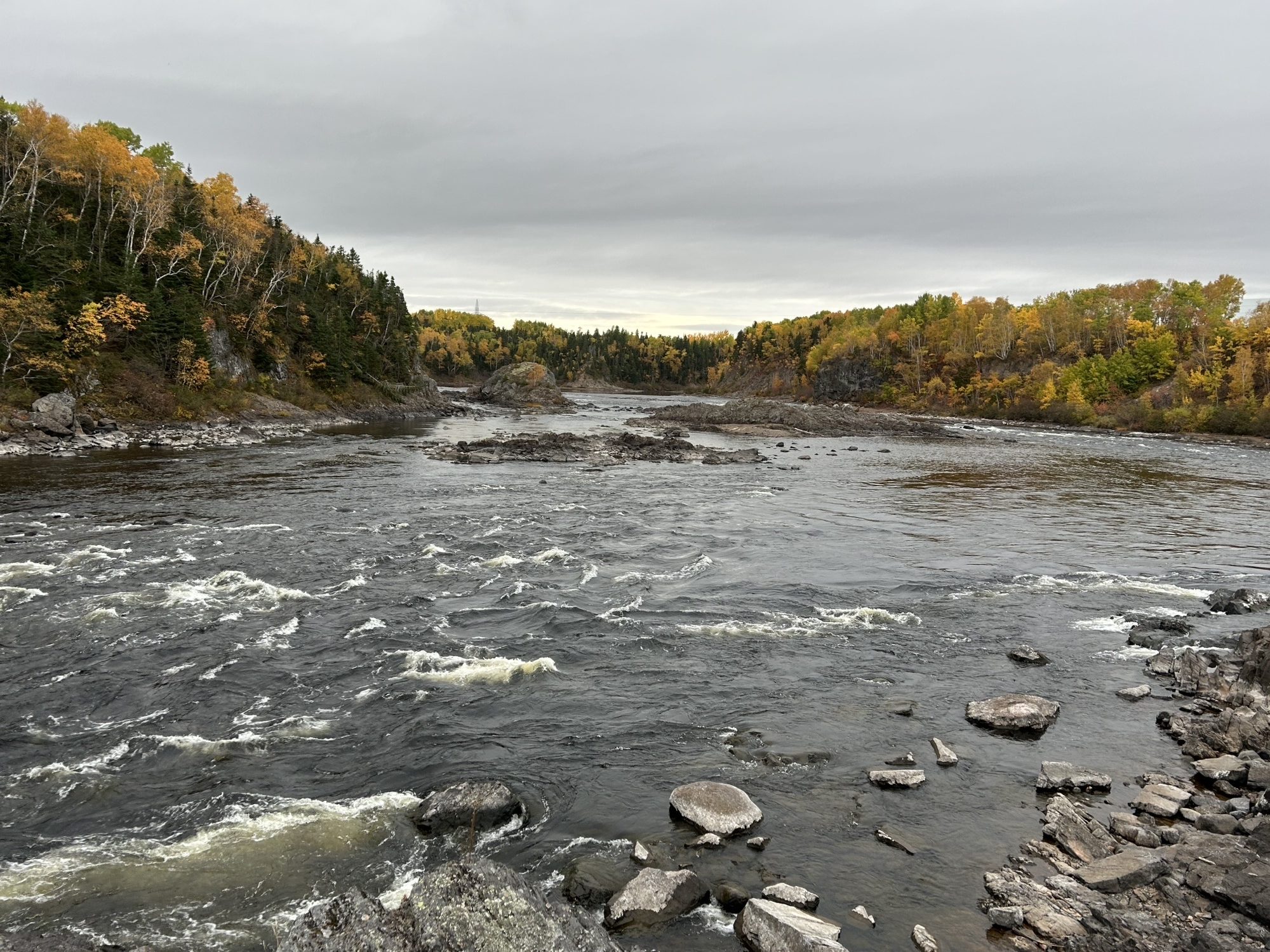
Kim also extends congratulations for a great initiative that’s trying to keep our rivers cleaner:
“Congratulations to ACAP Humber Arm on deploying twenty monofilament collection receptacles on waterways throughout the province during the 2025 recreational angling season. Knowing that improperly discarded fishing line can last in the environment for up to 600 years and is the leading cause of entanglement issues for wildlife, people, and property, these collectors were needed and very well received. Thanks to ACAP Humber Arm for leading this beneficial initiative and to all the anglers and salmonid groups in the province who stepped up to assist in the deployment of the fishing line collectors on the rivers.”
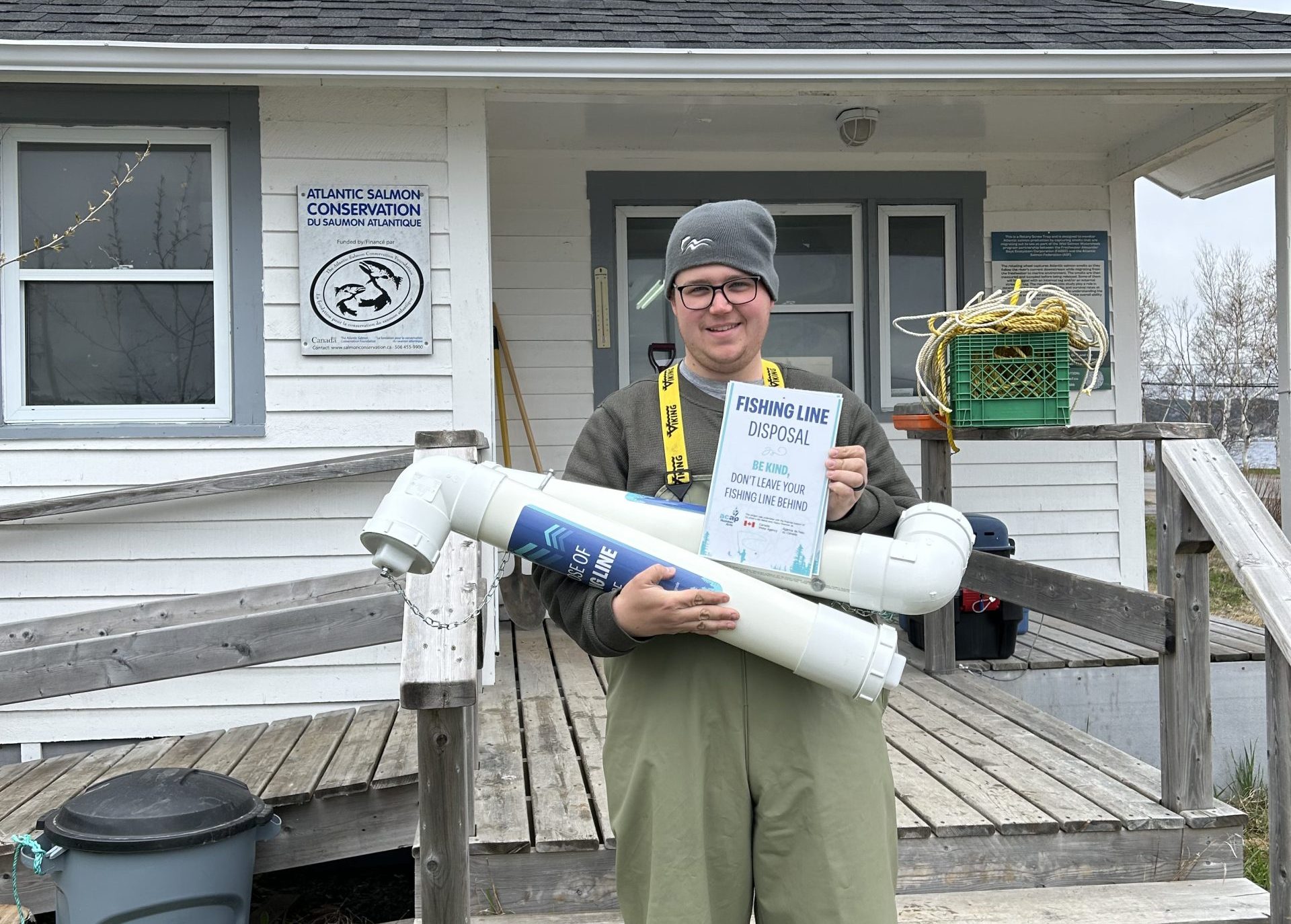

And finally, it’s the time of year to recognize those that are doing great work for salmon and trout in eastern Newfoundland. Kim has details on the Guenter Behr Award and the deadline for nomination submissions:
“The Salmonid Association of Eastern Newfoundland (SAEN) is presently seeking nominations for its longest standing award, the Guenter Behr Wild Atlantic Salmon Conservation, which was established in 1980 in memory of Mr. Guenter Behr. Mr. Behr was an avid outdoorsperson and conservationist, who joined SAEN in 1979 as one of its founding directors and was instrumental in assisting SAEN during the preliminary stages of its organization.
The Guenter Behr Award honours individuals, groups or organizations who have demonstrated outstanding conservation or protection activities related to salmon and/or trout populations in Newfoundland and Labrador. Nomination submissions are due by Sunday, November 2nd. If you would like to find out more to make a nomination submission, please contact the SAEN office at 709.722.9300 or info@saen.org.”
A headwater restoration project on a Prince Edward Island watershed was recently completed and visited by ASF’s Kris Hunter last week. Jordan Condon, ASF’s Wild Salmon Watershed Science Coordinator, writes:
“Three culverts were replaced on the Miminegash River to address fish passage and water quality concerns caused by impounded water backing up and warming. During spring assessments, an 11°C temperature increase was recorded downstream of the impoundment.
Danny Murphy, Watershed Coordinator with Roseville Miminegash Watersheds Inc., led the project with support from ASF’s Headwaters Program. Following the culvert replacements, the stream channel was able to flow freely, draining the impoundments and allowing the channel to re-establish naturally. Danny and his field crew plan to begin reestablishing the riparian zone in 2026 by planting native trees and shrubs.
An encouraging early sign of success was noted by the contractor after completing the middle culvert. Approximately 20 trout were observed moving through it, indicating restored connectivity. The third culvert site had not previously been delineated as a watercourse, despite having the most flow of the three locations. With this project completed, that reach has now been delineated above the culvert, making it subject to provincial riparian zone requirements.
ASF also contributed temperature data loggers to expand upon those already deployed by Danny, supporting a comprehensive temperature assessment of the entire watershed. Data collected prior to and following the culvert replacements will continue through 2026 to assess temperature improvements.
Reflecting on the project’s success, Danny mentioned that he was very pleased with the outcome and sees it as a great benefit for both trout and salmon in the system. “
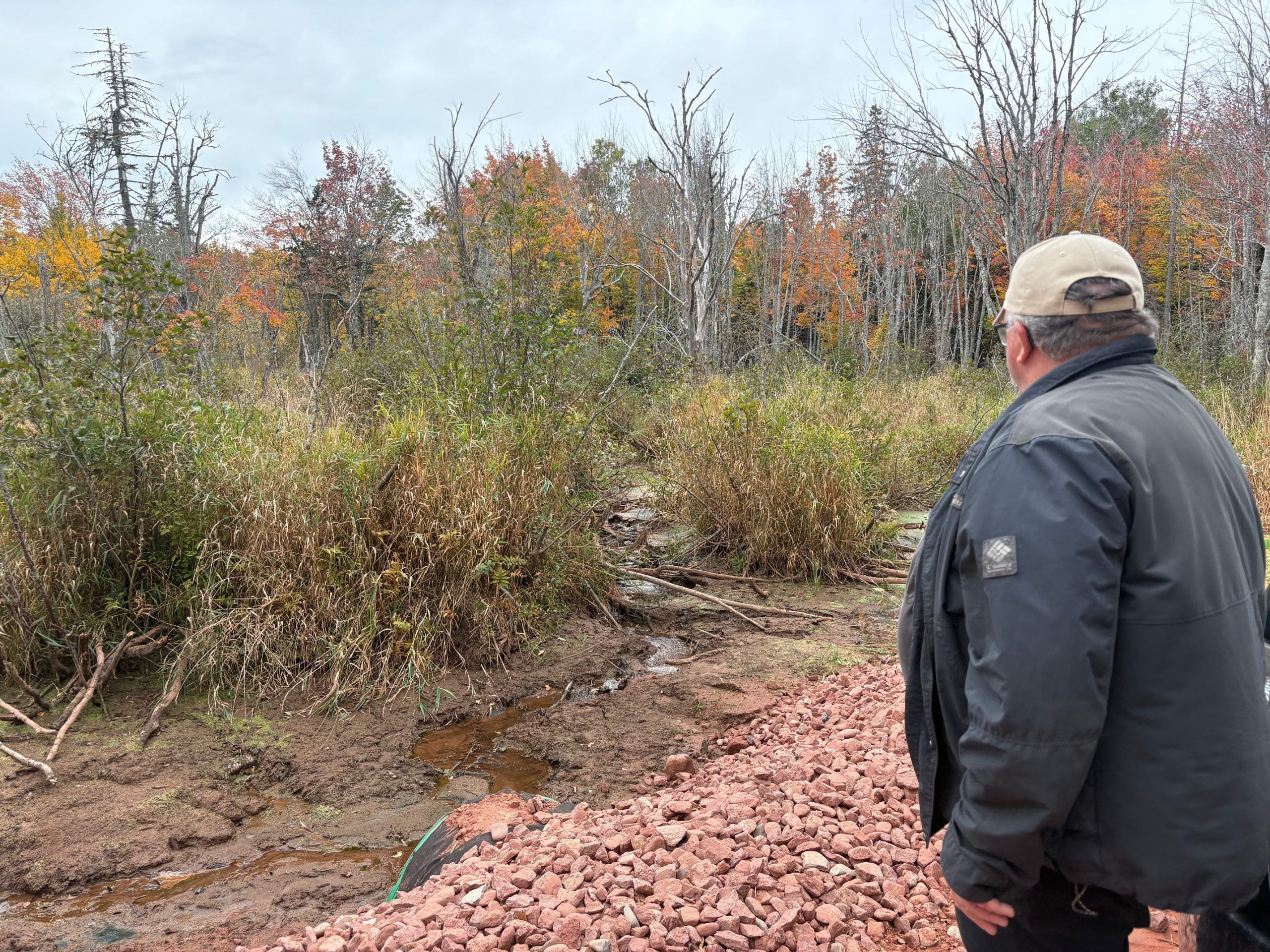
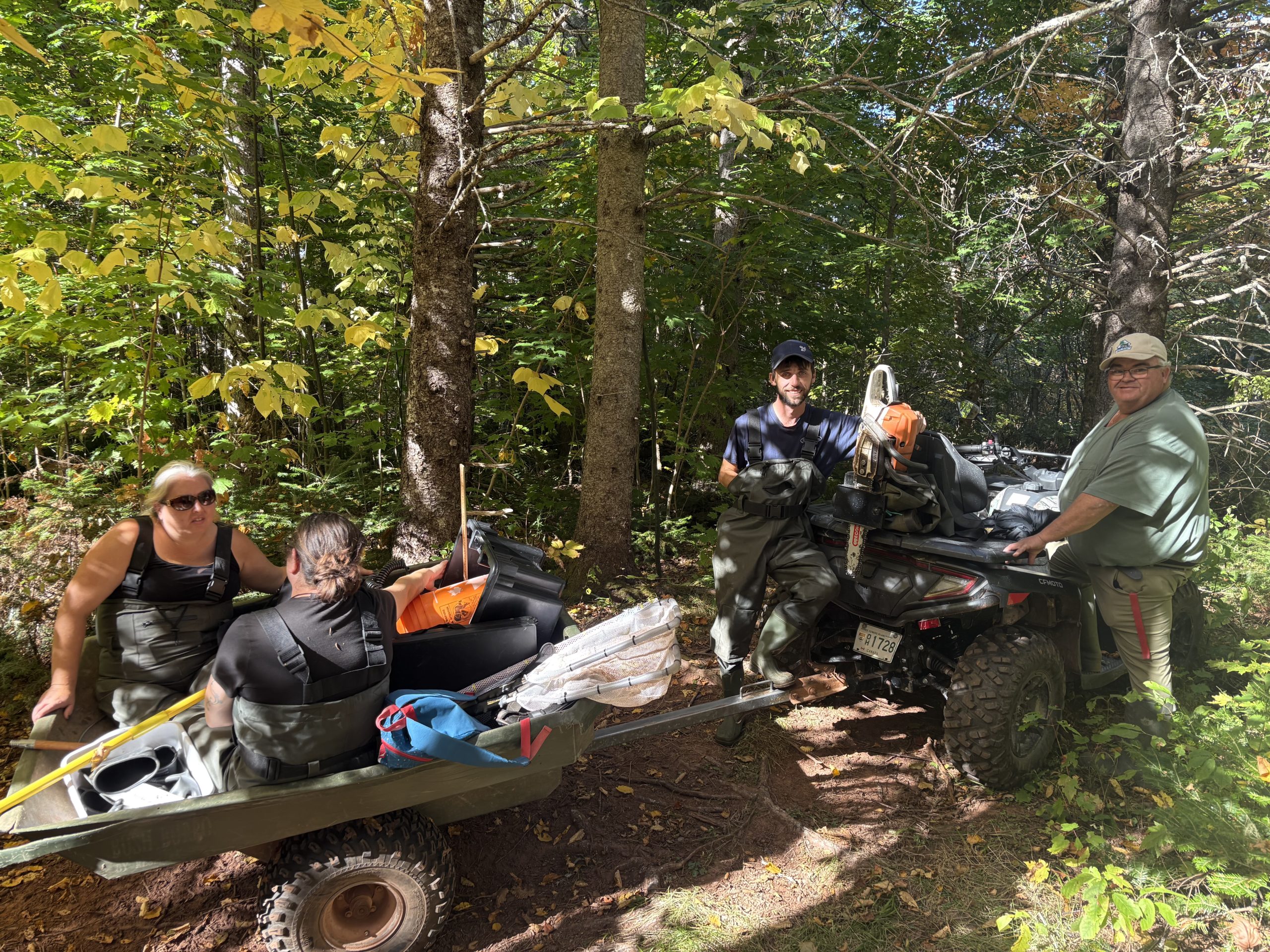
Michael Fabiano, the Watershed Coordinator for the Margaree Salmon Association (MSA), provided this submission on some of the work the association has accomplished so far this fall, as well as a recap of the success of the MSA’s annual AGM, dinner and auction. He writes:
“Summer may be over but that does not mean things are slowing down on the Margaree. The Margaree Salmon Association has been busy as ever with fall fieldwork and events.
One of the major fall fieldwork activities involves bringing in all temperature loggers that have been out all summer recording water temperature at 47 sites throughout the watershed. Some loggers are right off the road and take 5 minutes to retrieve. Others, like our temperature logger at First Fork Brook require a hike that takes most of the morning—not that we’re complaining, with all the beautiful fall leaves.”
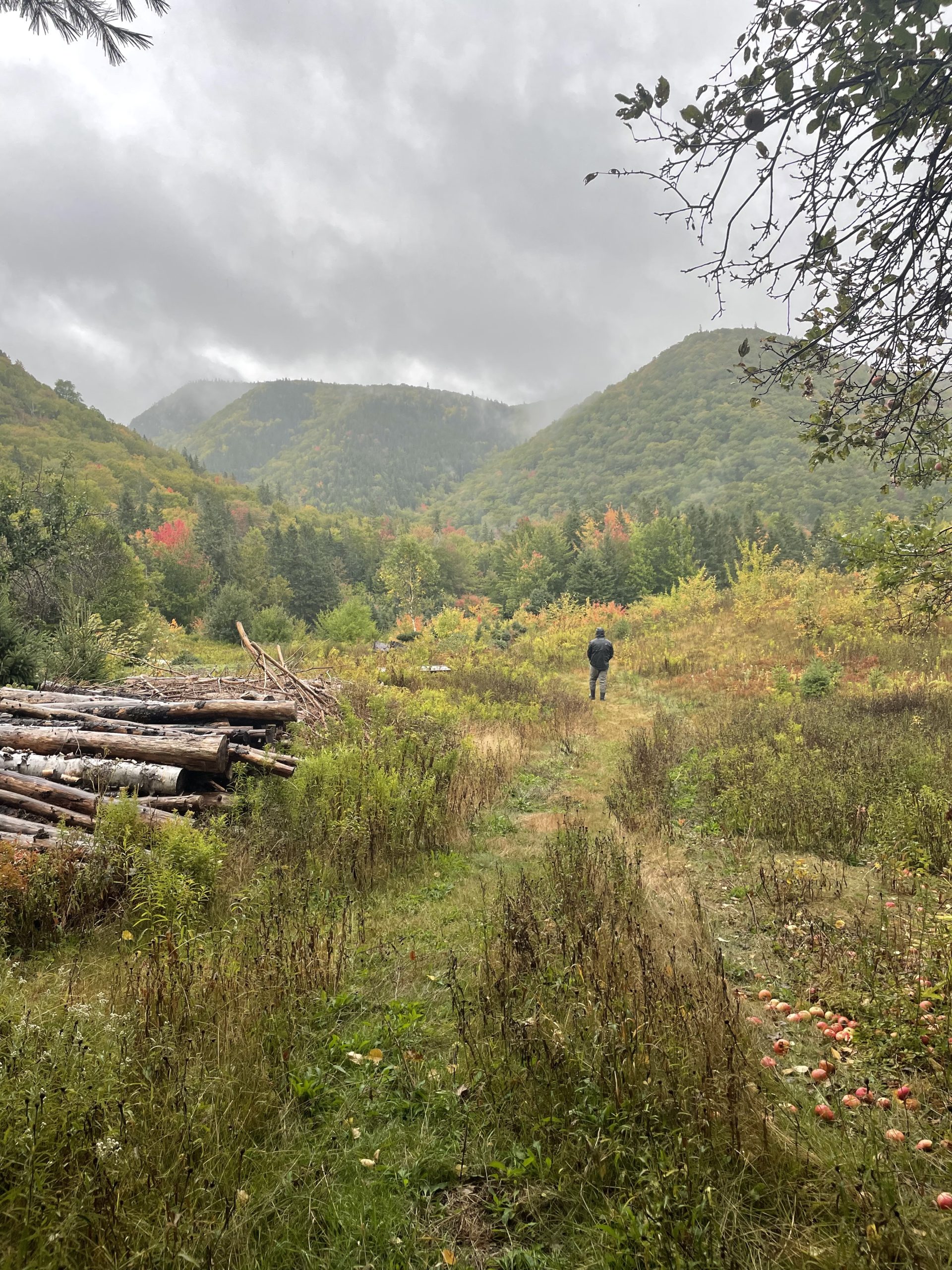
“MSA also hosted our annual AGM, dinner auction, and online auction. This year’s dinner auction was a major success, with over 90 in attendance, over 25 live and silent auctions to bid on, a 50/50 draw, and two raffles. Our online auction was also a major success, with 11 items up for grabs and some major bidding wars taking place for prized Margaree watercolours by Eric Kaye. All proceeds go towards supporting MSA’s continued conservation work in the Margaree.
MSA will likely have a few more weeks of consistent fieldwork activity before things begin to wrap up. We would like to extend a thanks to all of our staff, board of directors, members, and partners for such a successful field season.”
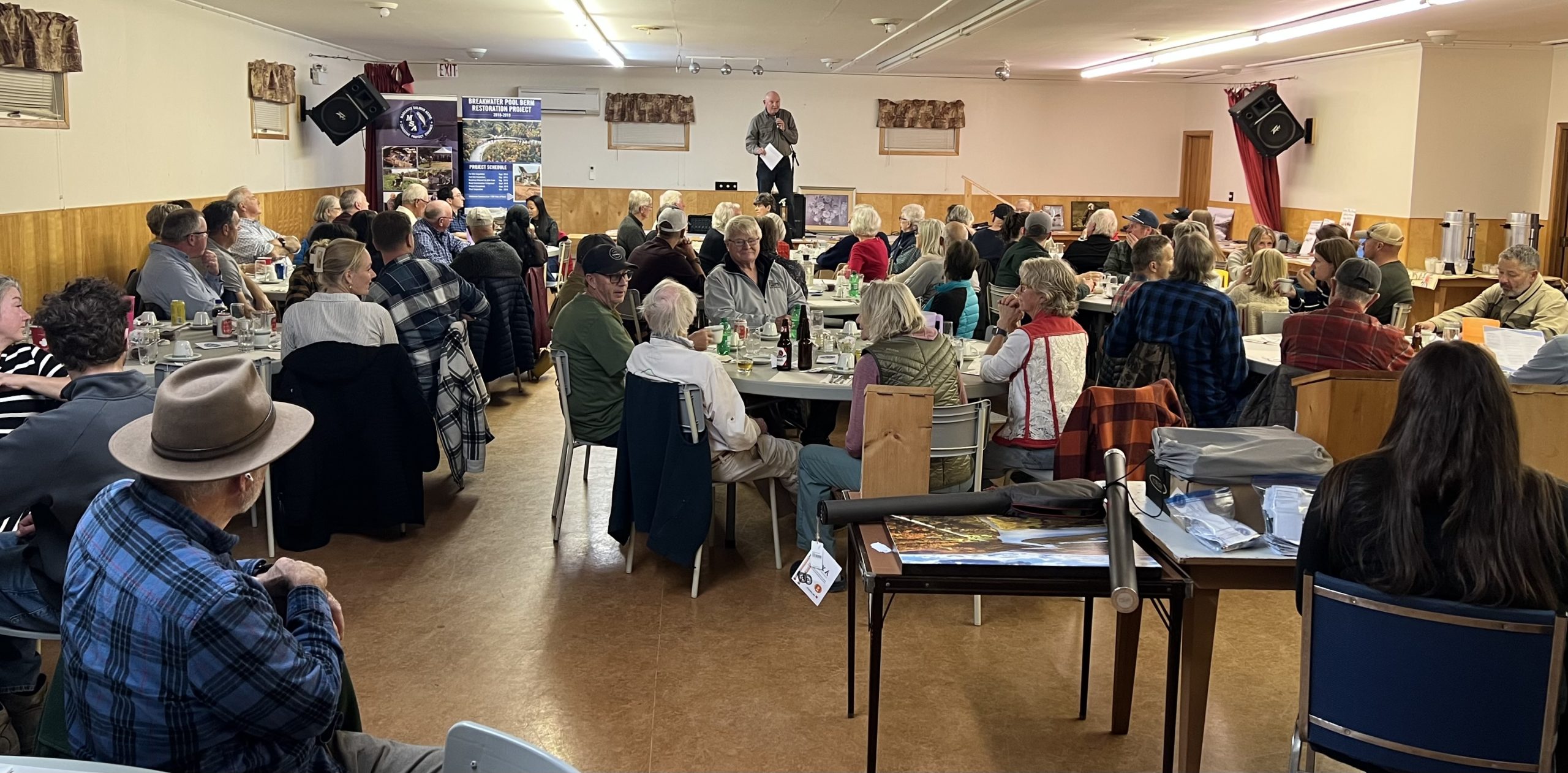
Bruce Wheadon, a Project Manager with the St. Mary’s River Association, has updates from some of the restoration projects completed on the St. Mary’s, including a fascinating passive cold-water refugia enhancement project. He writes:
“The 2025 field season was a resounding success for the St. Mary’s River Association.
Restoration works were completed in Cross Brook, Barren Brook, Dort’s Brook, Sutherland Brook, and the North Branch St. Mary’s via the installation of instream structures. Large-scale bank stabilization projects were completed in the East, West, and Main Branches of the St. Mary’s River via the installation of deflectors and rock groynes.
In total, over 121,000 sq. m of habitat was restored in the St. Mary’s in 2025.
To complement the restoration works, a chute and baffles were installed in a degraded wooden box culvert on a tributary to Cross Brook. Reconnecting this stretch of river will provide access to 12.5km of critical spawning and rearing habitat.
Another exciting endeavor was partnering with the Nova Scotia Salmon Association to install a passive cold-water refugia enhancement project on the East Branch in Willowdale.
A trench was dug from one area of the river to another, a perforated pipe was placed in the trench, and the trench was filled with gravel and capped with soil. Warmer water upstream will get redirected underground—allowing it to cool by mixing with ground water—and will be displaced into a downstream pool, where the engineered thermal refuge will create critical cold water holding pools for migrating salmonids.
Navigating field work during a drought of this magnitude proved challenging, and the effects of the drought were apparent during late-September electrofishing surveys.
Parr were significantly smaller than in years past due to a lack of food availability, and overall densities were down throughout the watershed. As we move into spawning season, we are curious to see the impacts the drought will have on the displacement and total number of redds found in the watershed.”
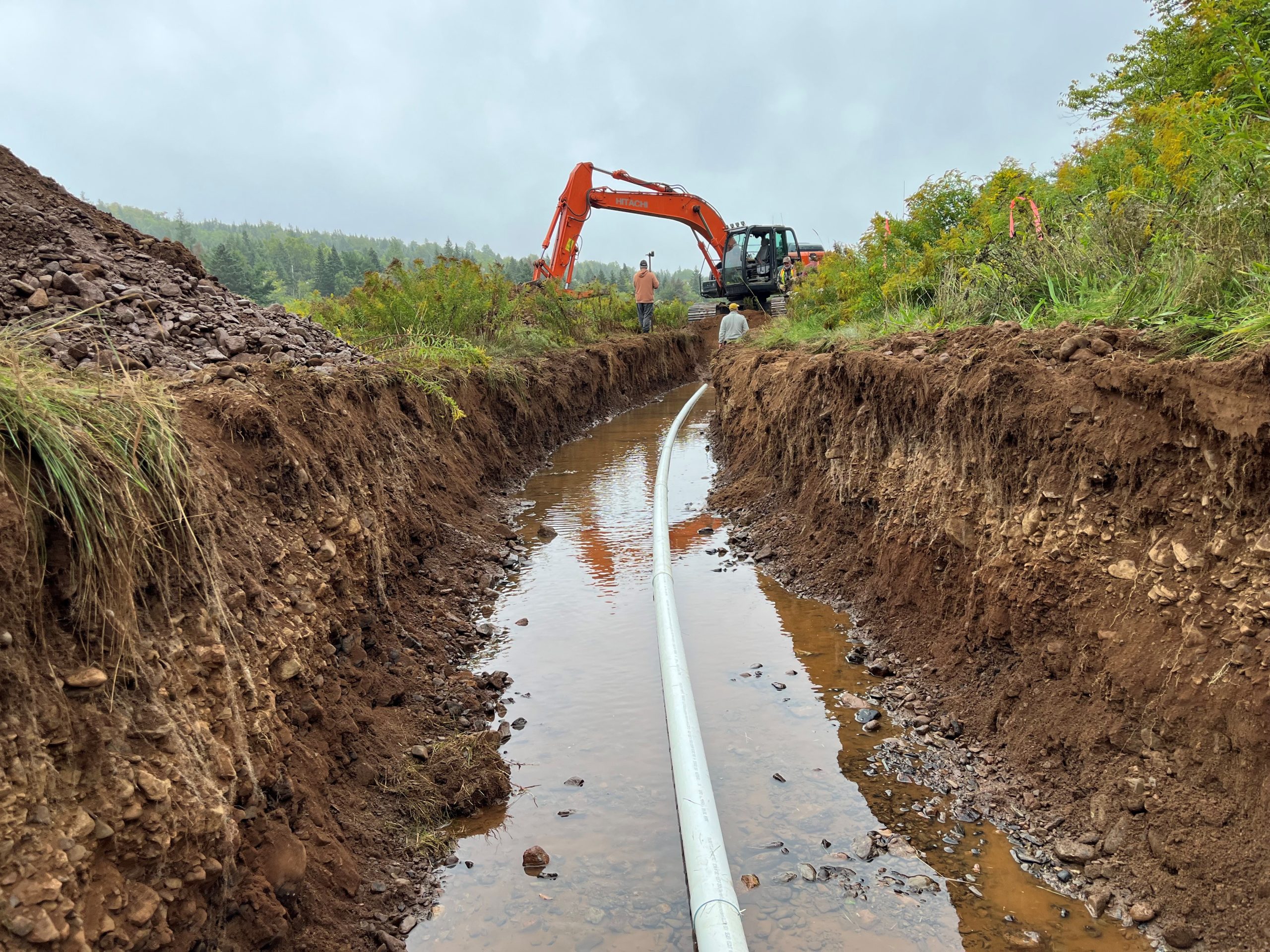
We also received submissions from Tobias Gow, a guide on the Margaree River. He writes:
“After a slow and steady rain that lasted about 36 hours, the Margaree River rose nicely and dropped fairly slow in comparison to other rain events. A number of fish were hooked in both high and low areas of the river after the rain, some were fresh fish. The river has since dropped back down to low water level again, with more fish showing and less fish being hooked.”
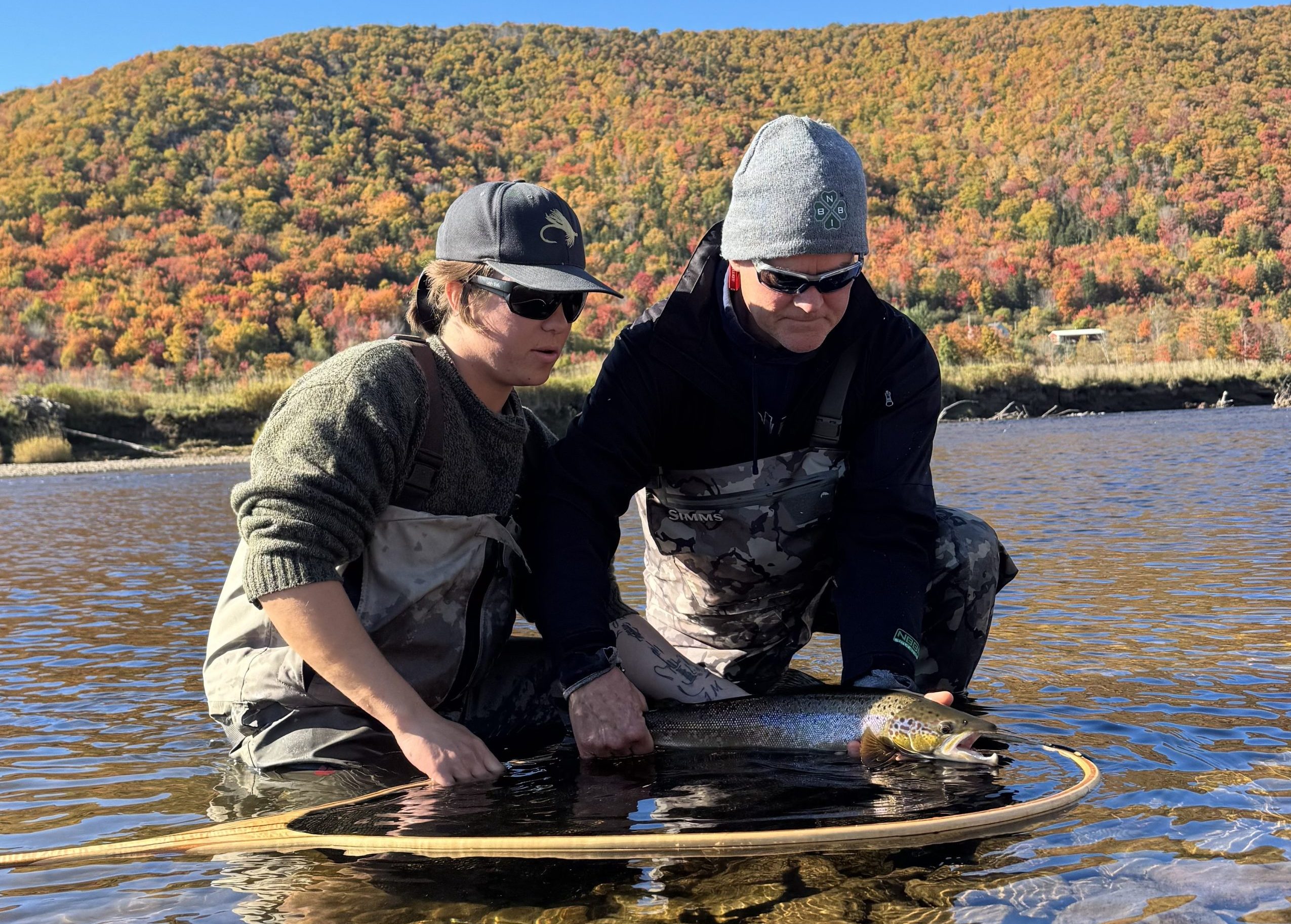
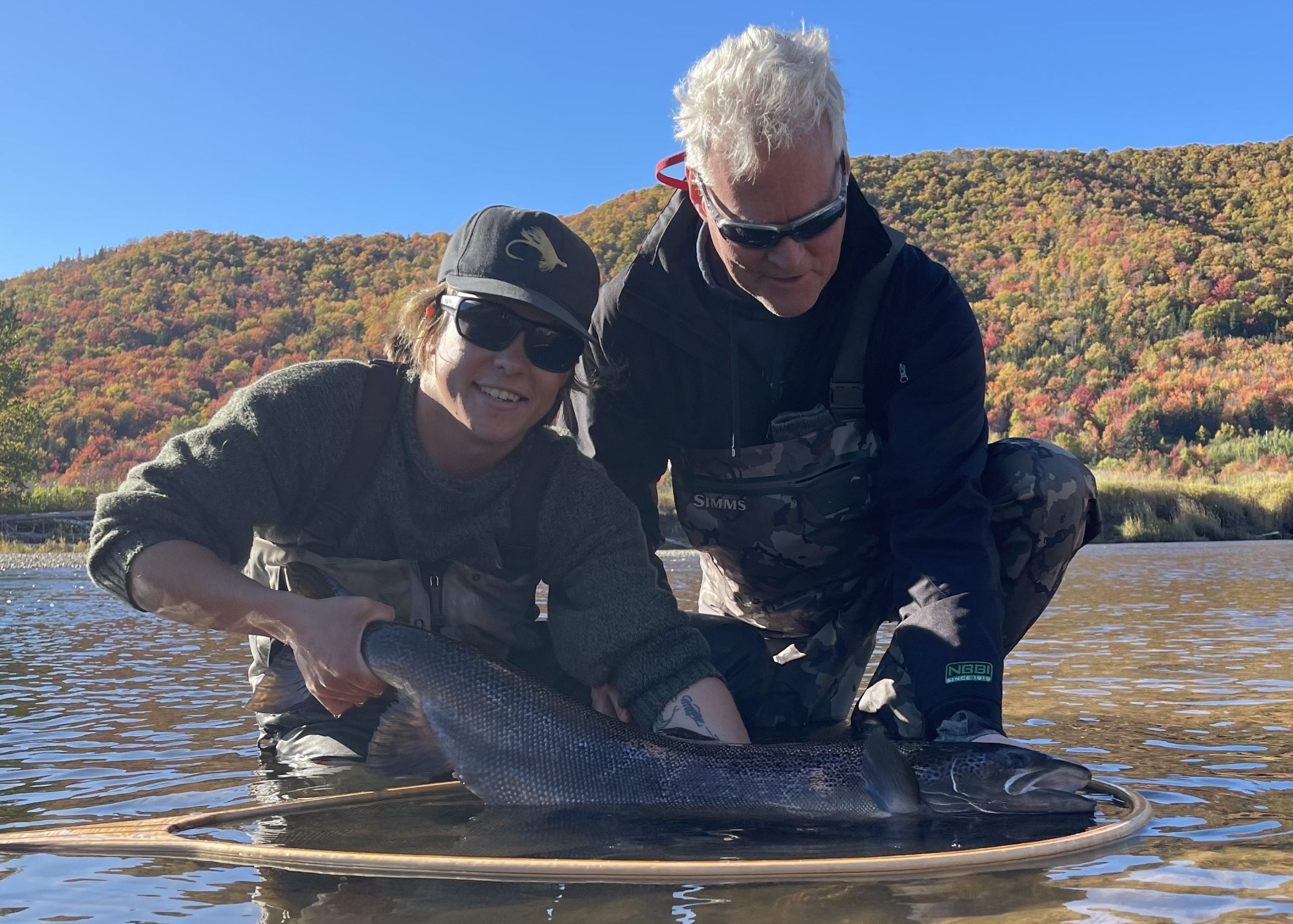
Scotty Sherin also sent in photos from the Margaree over the thanksgiving weekend.
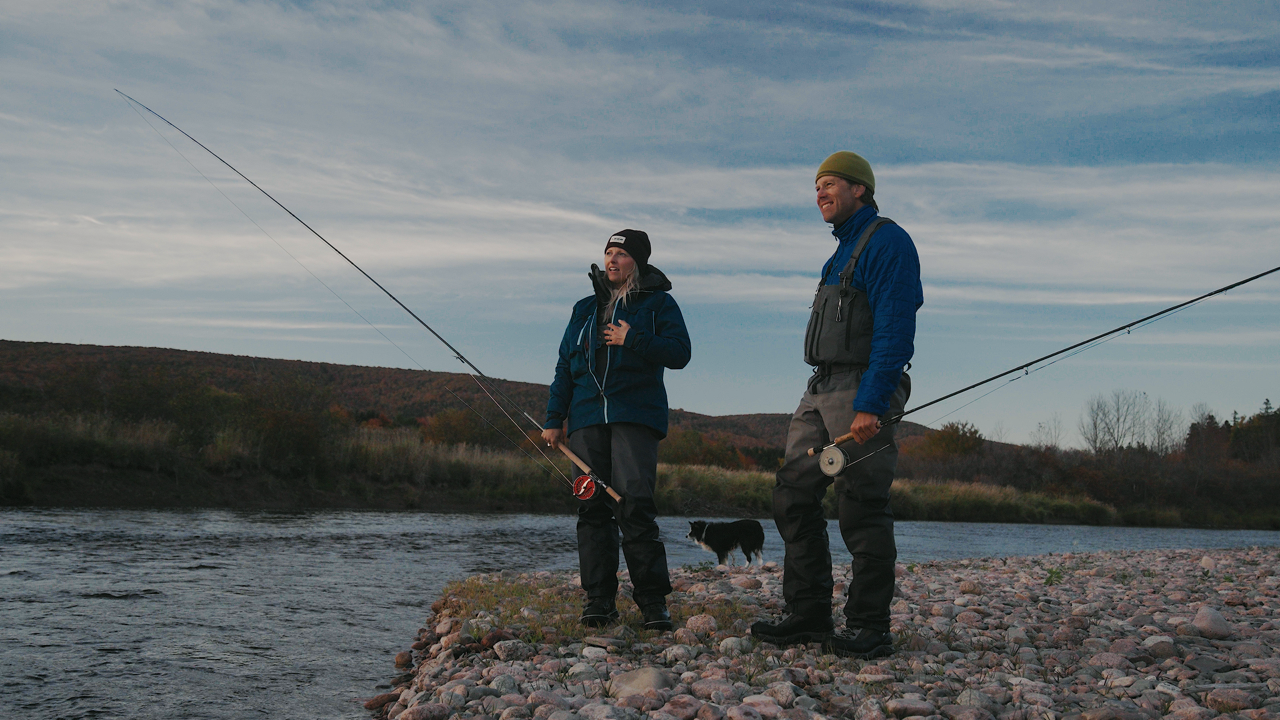
This week, Heather Perry from Research is having an exceptional time in Gaspésie working with Simone Fugère from Université de Sherbrooke/AGHAWM) and Antoine Roy-Audit from FQSA taking eDNA samples along some sections of the Cascapédia, Ste-Anne, and York Rivers. The research is led by Simone and Louise Chavarie from Norwegian University of Life Sciences, examining the overlap between Atlantic salmon and striped bass habitats.
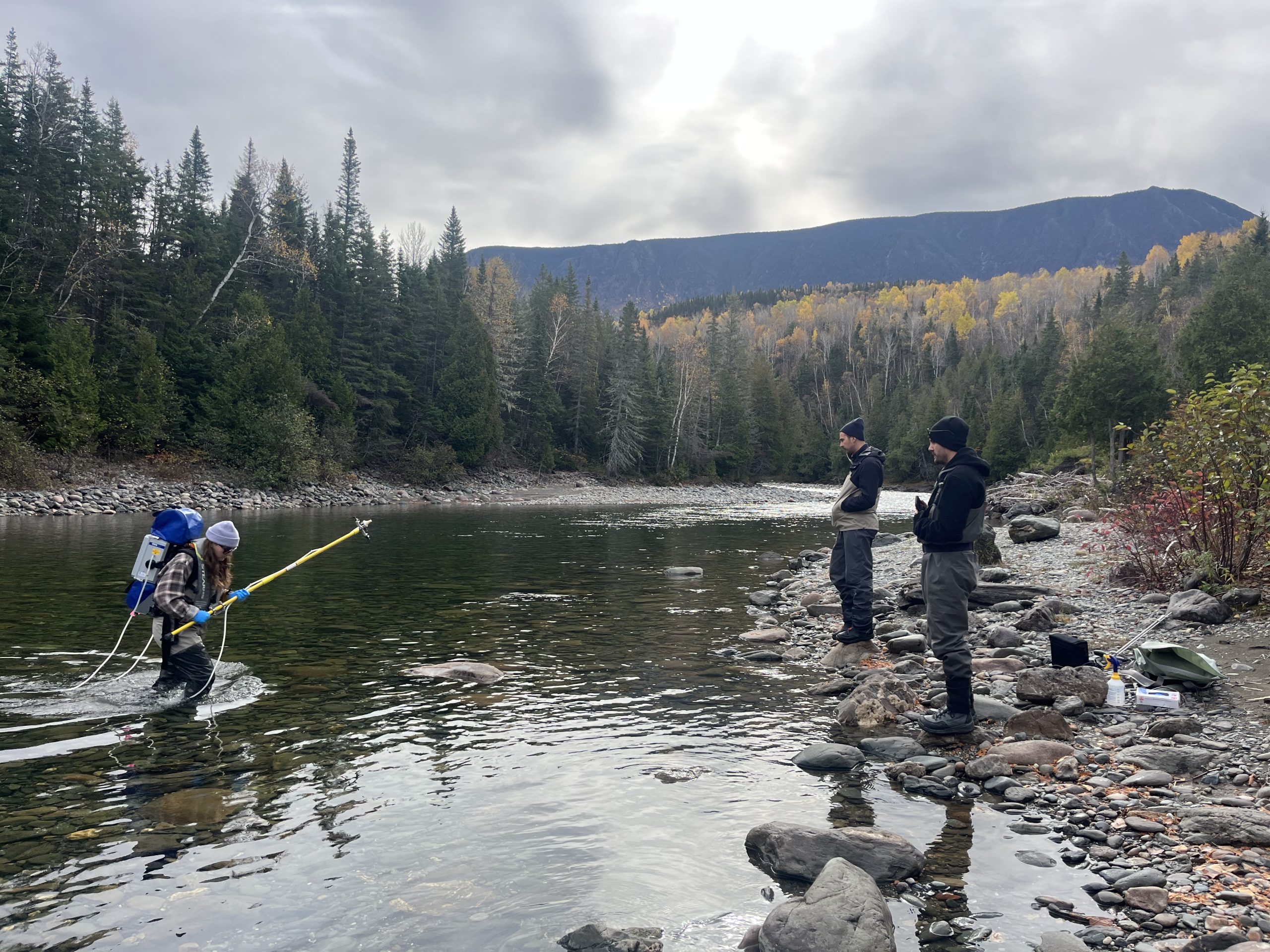
Last week the Lieutenant Governor’s Award for Wild Atlantic Salmon Conservation was presented to Stephen Chase, and encouraging numbers came in from salmon barrier fences. Mid-October has also brought the closure of more rivers in New Brunswick, and the start of the annual spawning. ASF and affiliate organizations will soon be heading into the field to do redd surveys. ASF’s New Brunswick Program Director, David Roth, writes:
“As mid-October arrives, the fishing season has come to an end on some of New Brunswick’s best-known salmon rivers. The Restigouche and Miramichi systems, along with many of their tributaries, have now officially closed for the year. While these larger rivers take a well-deserved rest, anglers can still enjoy the final days of the season on several smaller rivers across the province that remain open until the end of the month. Those still on the water are reminded to fish cautiously and continue using careful handling practices during any late-season releases.
Despite the low water conditions currently affecting many rivers, salmon have begun their annual spawning. Our team, along with staff from several affiliate organizations, will head into the field in early November to conduct the annual redd surveys. These surveys are essential not only for understanding spawning success but also for planning field work in the coming year by identifying the areas that served as this season’s spawning hotspots. We received the latest salmon count numbers from the Miramichi and Restigouche rivers, and they are significantly higher than in 2024. At both Miramichi barrier fences, the counts were nearly double last year’s record low.
Last week also brought a moment of recognition and pride for New Brunswick’s salmon conservation community. At Government House in Fredericton, the 2025 Lieutenant Governor’s Award for Wild Atlantic Salmon Conservation was presented to Stephen Chase, honouring his decades-long commitment to protecting and restoring wild Atlantic salmon populations in New Brunswick and across Atlantic Canada. The award, announced earlier this year by the New Brunswick Salmon Council, celebrates individuals who have made exceptional contributions to salmon conservation. Council President Butch Dalton described Chase as a tireless advocate for the species, whose leadership and passion have left a lasting mark on the conservation movement.”
